Inkjetlings Round eTable: Jackson’s Desolation of The Hobbit?
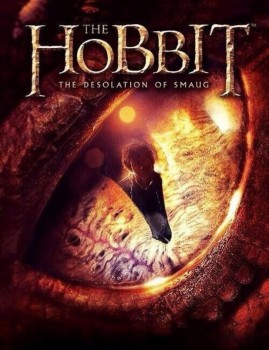 This week Frederic S. Durbin, Gabe Dybing, and I discuss our impressions of Peter Jackson’s latest film The Hobbit: The Desolation of Smaug. The conversation is a casual and meandering one among friends, although I have tried to group observations under distinct topics. In keeping with the informal nature of the exchange, I have used our first names.
This week Frederic S. Durbin, Gabe Dybing, and I discuss our impressions of Peter Jackson’s latest film The Hobbit: The Desolation of Smaug. The conversation is a casual and meandering one among friends, although I have tried to group observations under distinct topics. In keeping with the informal nature of the exchange, I have used our first names.
First Impressions (and a link to a completely different review)
FRED: It’s a lot of fun. I was surprised in this one by the extreme departures from the book . . . so this one felt to me like I was watching really well-done fan fiction. But if you can accept that, the movie really is entertaining. It’s fun seeing the characters and settings. I’ll hold off saying any more until I’m sure you guys have seen it.
GABE: It was a lot of fun, but it certainly will be interesting to talk about. How about you, Nick? Are we waiting for you to see it?
NICK: I finally did get to The Desolation of Smaug — Mel and I arranged a date night and saw it together. She is a HUGE fan of the LOTR movies, but with this film, she feels that something is just off. I found it an enjoyable spectacle, with the caveat that in tone it is very little like Tolkien.
FRED: I can certainly understand Mel’s reaction. In this second Hobbit movie, for the first time in five films, I was surprised by the sharp veering away from Tolkien’s storyline. I’ve never felt it so keenly as I did this time. Now, rationally, realistically, I knew it was coming. Jackson & crew had the opposite challenge in making The Hobbit to the one they had in LOTR. In the latter, they had to squash three big volumes of a book into three reasonably-lengthed movies. In The Hobbit, they had to take a much smaller story and stretch it into three films, each with at least some sense of an independent story arc. So I knew that they were going to have to spend screen time doing things that Tolkien didn’t do. Nevertheless, on a first viewing of this second Hobbit film, I was startled. It was great fun, it was a spectacle, it was entertaining, and I was delighted to be watching it — but I was jarred.
NICK: I think maybe this writer Jordan Jeffers has nailed something here with regard to tone. I’m curious what you guys think of his assessment: “The Hobbit and the Watchful Dragons of Our Hearts.”
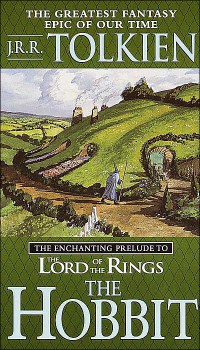 FRED: I agree with a lot of what this writer says, except for what he says about how the movie version of Bilbo comes across. The Bilbo of the films isn’t swallowed up by the hugeness of the spectacle. I’d argue that Jackson (and the actor) make Bilbo proportionately bigger to keep up with the big-screen story. Things are burning and exploding on-screen, so we get a Bilbo who leaps off the fiery log to slay goblins. A bit improbable? Yes. But in keeping with the Bilbo Tolkien gives us, who is resilient and remarkably courageous. I was surprised on my recent, adult reading of The Hobbit by just what a leader Bilbo is, again and again. Throughout the book, he saves the Dwarves’ necks, and he saves the quest. I think his written part for the films, the casting, the direction of him, and the acting are all pretty much perfect.
FRED: I agree with a lot of what this writer says, except for what he says about how the movie version of Bilbo comes across. The Bilbo of the films isn’t swallowed up by the hugeness of the spectacle. I’d argue that Jackson (and the actor) make Bilbo proportionately bigger to keep up with the big-screen story. Things are burning and exploding on-screen, so we get a Bilbo who leaps off the fiery log to slay goblins. A bit improbable? Yes. But in keeping with the Bilbo Tolkien gives us, who is resilient and remarkably courageous. I was surprised on my recent, adult reading of The Hobbit by just what a leader Bilbo is, again and again. Throughout the book, he saves the Dwarves’ necks, and he saves the quest. I think his written part for the films, the casting, the direction of him, and the acting are all pretty much perfect.
NICK: To add to what Jeffers wrote, I think the strange inconsistencies in tone with the first two Hobbit films comes from their striving to blow a children’s book up into a grim adult dark fantasy. Some of the more silly and fanciful elements of the source material seem jarring against the horrors and head decapitations that are more in line with LOTR, a work Tolkien wrote for an adult audience.
FRED: Yes — I think you’re right here. The tone of the movies of The Hobbit so far is quite different from Tolkien’s book. It’s quite enjoyable, but it’s for adults.
GABE: I had pretty much the same reaction as you and that other reviewer, Nick, and I’m guessing Fred meant something fairly similar with how it feels like real quality fan fiction. I feel like a lot of character and world building got dumped for exhaustive, improbable, video game quality action sequences. I had to assuage my disappointment with Beorn by rereading “Queer Lodgings.”
NICK: I understand they’re trying to fill in and mesh it with LOTR via material from the Appendices etc.; it may have been less confusing if they’d just dropped “The Hobbit” from the title and kept the subtitles: An Unexpected Journey, The Desolation of Smaug, and There and Back Again, to underscore that these are “bridge movies” leading into LOTR and not just a straight-up adaptation of The Hobbit. The original book itself just was not the epic they’re trying to make it into to duplicate LOTR.
World Building versus World Shrinking
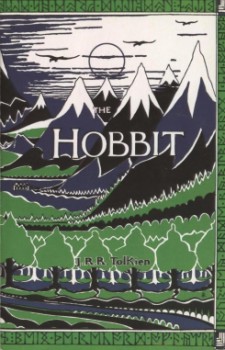 NICK: One other observation, which I also made with the LOTR films. It seems to be a common Hollywood rule: everything must relate to the main conflict in the narrative. Thus, everything in all five Peter Jackson films revolves around Sauron. Perhaps it makes sense in the medium of film, but it has the disheartening effect of shrinking the world. Part of the wonder of Middle-earth, of course, is that it is so expansive, so big. There is so much there, hinting at all else that is also there beyond the focus of the narrative. Here are two examples of what I mean by the films undercutting that effect: In The Fellowship of the Ring, when the party is crossing the Redhorn Pass, they are forced to go under the mountain because of the blizzard. In the book, Gandalf implies that this is the spirit of the mountain itself coming against them — an independent force in the world. In the film, if I recall correctly the avalanche is tied back to Saruman.
NICK: One other observation, which I also made with the LOTR films. It seems to be a common Hollywood rule: everything must relate to the main conflict in the narrative. Thus, everything in all five Peter Jackson films revolves around Sauron. Perhaps it makes sense in the medium of film, but it has the disheartening effect of shrinking the world. Part of the wonder of Middle-earth, of course, is that it is so expansive, so big. There is so much there, hinting at all else that is also there beyond the focus of the narrative. Here are two examples of what I mean by the films undercutting that effect: In The Fellowship of the Ring, when the party is crossing the Redhorn Pass, they are forced to go under the mountain because of the blizzard. In the book, Gandalf implies that this is the spirit of the mountain itself coming against them — an independent force in the world. In the film, if I recall correctly the avalanche is tied back to Saruman.
FRED: Yes — the movie shows Saruman calling down the avalanche.
NICK: In The Desolation of Smaug, everyone is muttering about the return of Sauron — the leader of the wood elves; hell, even Smaug brings it up!
FRED: Yes. Smaug pointedly says something about “Precious,” which doesn’t even make sense.
NICK: Everything getting tied back to this central conflict dilutes the impression that in traveling through Middle-earth you might encounter powers and unfriendly forces that have nothing to do with Sauron.
Getting “bonus points of orcs” in Middle-earth: The Video Game
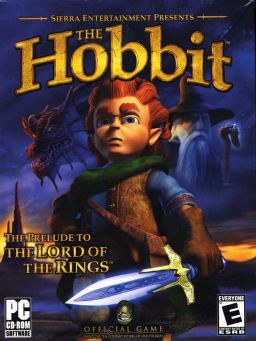 GABE: Spectacle is what I would call it, too. During my first viewing, I was fairly impressed with the pacing. While taking the liberties that are necessary for a cinematic experience, Jackson and company quickly moved the viewers from pursuit by the Orcs to an encounter with Beorn to even a surprisingly rushed altercation with Giant Spiders. Very interesting, I told myself. Such management of time. I wonder what this is all leading up to.
GABE: Spectacle is what I would call it, too. During my first viewing, I was fairly impressed with the pacing. While taking the liberties that are necessary for a cinematic experience, Jackson and company quickly moved the viewers from pursuit by the Orcs to an encounter with Beorn to even a surprisingly rushed altercation with Giant Spiders. Very interesting, I told myself. Such management of time. I wonder what this is all leading up to.
What it led up to was exorbitant amounts of time for… action? And CGI action, too! There has been much talk about the influence of video games on modern movies, an influence that comprises more than the permissible adaptation of successful video game narratives to movie form. And it simply doesn’t make sense to me, by the perhaps naïve logic that movies preceded video games, that, when it comes time to craft action sequences, video games would influence movies. But I felt like I was watching a video game not only because of the obvious CGI flourishes but because the action was structured like a video game. Anyone who has played through a video game narrative can guess that, in An Unexpected Journey, Gandalf, while trying to escape Goblin Town, noticed a large chunk of rock that could be put to good use because of a target sign that appeared where he should strike it with his staff or something. This, of course, resulted in a boulder that rolled ahead of the party and took out major bonus points of Orcs.
This same move, though this time with a Dwarf in the “boulder,” is used in The Desolation of Smaug. While whipping along the Forest River “water ride,” the gamer hits “B” at just the right moment when the target springs up, in this manner sending Bombur’s barrel up for major critical hits and bonus points in a spectacle of action that both awes and amuses. Similarly, the giant lever that would release the barrels from the bounds of the Woodland Realm serves as a gaming obstacle, and the scene in which Thorin has to maneuver a barrel among exploding rock and a writhing dragon is just one more tedious “task.”
So the action is unimpressive, but worse is the feeling that it was bloated at the expense of character development and world building. The Dwarves couldn’t be introduced to Beorn “two at a time,” in order for Gandalf to make strategic use of Beorn’s Northern sense of “hospitality,” but wouldn’t it be better to get a sense of how the man lives, to get a good look at his intelligent horses who look into the faces of the Dwarves and gallop off to inform their master of visitors, to see them lighting torches by using their mouths to stick them in the fire, to see dogs serving the Dwarves, standing on hind legs, holding trays in their front paws?
NICK: From what I’ve read, del Toro’s [Guillermo del Toro, who was originally slated to direct] vision of the film would have been much closer to that, would have felt more like a fairy tale, less like a video game.
GABE: One gets the feeling that Jackson and company have decided that modern audiences don’t care about this sort of thing. And they may be right. Perhaps modern audiences want to live in a purely constructed, artificial environment, one that is all the more attractive because it so obviously is artificial. Who wants to bother with real dirt and real lives and real people? They’re all just NPCs anyway.
Jedi Elves Use the Force
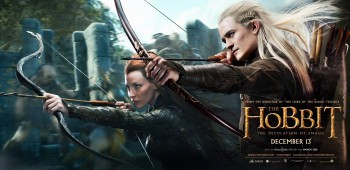 FRED: I’m not sure why the moviemakers felt it was a good idea to make elves be Jedi Knights in combat. And my wife and I were chuckling over the apparent fact that any good character in Middle-earth can fall from any height and be okay. At least it’s consistent through all the films!
FRED: I’m not sure why the moviemakers felt it was a good idea to make elves be Jedi Knights in combat. And my wife and I were chuckling over the apparent fact that any good character in Middle-earth can fall from any height and be okay. At least it’s consistent through all the films!
NICK: Not just fall from any height, but do so while giant stone structures are crumbling all around them! The fact that none of these huge chunks of stone ever so much as grazes anybody only reminds us that they are just computer generated images.
FRED: Right! In the movies, that actually seems to be the rationalization for why the characters are okay: they’re falling with and among structures of wood or stone. The structures somehow soften the fall without hurting the characters.
Head-Scratchers: Democracy in Lake Town & a Diminished Bear-Man
GABE: While I’m on this jag, let me wonder at the one aspect that was “fully developed”: Lake Town. What is this strange rhetoric about “monarchy” vs. “democracy?” Clearly this is building up to the third movie, but I couldn’t help but be irritated by the manner in which Bard was so unreasonably hated. I was appalled by the return of Wormtongue. I was mystified by the dark aspects intruded in Tolkien’s Lake Town prophecy.
Of course, Jackson and company are setting up the pieces for some theme in the last movie, and I can understand that, but it seems to come at the expense of some more “character assassination:” democratic unrest and talk of “elections” in Lake Town seem hopelessly out of context, Thorin promising that Lake Town should share in the wealth of the Mountain is plain not “Dwarven,” and it certainly isn’t going to be much of a task for the Arkenstone to drive Thorin “insane” — clearly he is already, sacrificing Dwarves because he has to make “kingly choices” and pointing his sword at Bilbo in the midst of some paranoid belief that Bilbo has stolen the Arkenstone, while a Dragon is nearby.
FRED: I liked it a great deal more on the second viewing. (I liked what they did with Beorn’s face and accent, but in human form, he was WAY . . . TOO . . . SMALL! My reaction was, “My gosh, who’s this guy?” He’s supposed to tower over the others and fill the space with his presence. He looked pretty much normal man size. No, it’s true that Tolkien never says he’s a giant, but I certainly pictured him to be taller and broader.)
NICK: Apparently, del Toro wanted to cast Ron Perlman as Beorn. I kinda wish they’d stuck with that.
Team Gandalf versus Team Sauron
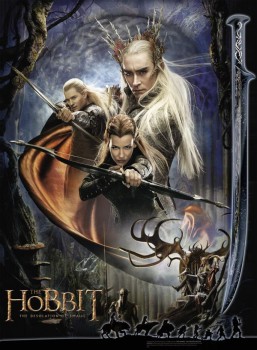 NICK: A follow-up point to my earlier thought about how the screenwriting necessity of streamlining a plot has the unfortunate effect of “shrinking” the world: by tying every character or event in some way back to the White Council or to Sauron, it makes it feel like everyone in the films is either on Team Gandalf or Team Sauron.
NICK: A follow-up point to my earlier thought about how the screenwriting necessity of streamlining a plot has the unfortunate effect of “shrinking” the world: by tying every character or event in some way back to the White Council or to Sauron, it makes it feel like everyone in the films is either on Team Gandalf or Team Sauron.
FRED: Yes, I think you’re right about this. I would imagine that was a primary reason for eliminating Bombadil from the LOTR films, although his rescue of the hobbits from the barrow is one of the finest moments in FOTR. It’s because there was no way to connect Bombadil with either Team Gandalf or Team Sauron. He simply IS, and he personifies exactly what you’re talking about: the wondrous and strange powers and beings of the world, some of which defy explanation.
To their credit, the filmmakers left a few of these things in: notably, the stone-giants of the Misty Mountains, which present a real threat to Thorin & Company, but which don’t seem to be in the service of Sauron. And in LOTR, they do a pretty good job with the Ents, who don’t automatically fall into step with Team Gandalf; they seem to be reacting more against Saruman and his wanton destruction of trees.
A sub-point to yours is how the movies follow the more modern trend in storytelling to tidy things up, to tie effects to causes in character action. Jackson and his team seem to have felt it was important for Gandalf to summon the eagles every time they appear. Have I forgotten a detail from the books? Don’t the eagles in Tolkien have more of an independent wisdom? Don’t they more often come to help when they themselves perceive the need?
Now, granted, concerning evil, it is in keeping with Tolkien’s concepts that the main evil power — be it Morgoth or Sauron — has a tendency to draw all dark things around its shoulders like a mantle; so, for example, the spiders of Mirkwood may be much-diminished, distant descendants of Ungoliant, and therefore have little to do with Sauron, but when he rises and regains power, the spiders multiply and become a greater threat. They thrive on the wave of darkness, and in one sense they become Sauron’s servants in that they are enemies of the free peoples.
NICK: Even Beorn, an independent power in the books, gets tied back to that particular orc that has been hunting them down (and whom we now know is in direct service of the Necromancer, Sauron) with that back-story about his people having been enslaved by that orc and his band. Leaving a little mystery can, as we well know, have the counter-intuitive effect of expanding the world via the reader/viewer’s own imagination, leaving open paths for it to wander which are closed off and walled in by filling in all the details with simple, pat explanations.
FRED: I agree wholeheartedly. An enormous source of wonder for me as a preteen and young teenager reading these books was the bigness of the world, the awareness that there were vast stretches and secret pockets of it where perilous things lay long-forgotten. To link, say, the Old Forest to Sauron would lessen the Old Forest. The richness of Tolkien is that there are dangerous things unrelated to Sauron, perhaps in some cases much older. It’s on the “board” where these things exist that the adventure takes place.
GABE: But let’s finish by engaging with Nick’s comments about the “teams” in Middle-Earth. This seems to make sense when one is making a movie, and it’s certainly not that far out of line with Tolkien. In “Durin’s Folk” and “The Quest of Erebor” Tolkien makes plain that Gandalf sent the Dwarves to the Mountain for his own purposes, hoping to “take out” one of Sauron’s most powerful allies — Smaug. It also is quite obvious that the Giant Spiders are proliferating in Mirkwood because of the proximity of the Necromancer in the South, and that Mirkwood is even Mirkwood (and not the Greatwood) because Sauron has taken up residence there. I don’t agree with all players being tied to one of two teams, but many of the ties are natural and Tolkienian. I even like Smaug referring to the “Precious,” Fred. It makes a lot of sense to me, because Sauron clearly has firm control over the Ring, and Smaug’s influence over it (snapping Bilbo out of his invisibility) shows just how powerful, evil, and “in league” he is with the Dark Lord.
That said, I am puzzled at what this movie is trying to do in regards to Sauron. In Tolkien’s timeline, Gandalf had at last prevailed on the White Council to attack Dol Guldur, and that’s of course what he was doing before the Battle of Five Armies — but not alone, obviously! In the movies, he not only is on some kind of detective mission but sends away his only ally. Surprise, surprise! Gandalf is beaten down and imprisoned. Perhaps it’s another one of Gandalf’s tricky master plans.
NICK: All that said, I look forward to watching both films again (and the third when it comes out), and I’m sure there are more viewings of LOTR in my future. It’s still all heads above most fantasy that’s ever been done on the big screen.
FRED: Absolutely! When I went in the second time, knowing what was coming, more prepared for the divergence, I enjoyed it even more. I honestly submit that the filmmakers did as well as they could have, and then some. Wherever possible, they drew upon the Appendices and upon LOTR . . . they logically extrapolated events implied in The Hobbit but not clearly spelled out. Really, I think they did a fantastic job. The only truly silly things they did in The Hobbit were 1.) Tauriel, and 2.) generating a little romance between her and Kili. I know, as with the ridiculous liberties they took with Arwen, it was all about trying to “mend” Tolkien’s focus on male heroes that fight. But by doing so, they genuinely compromised the original material by injecting modern sensibilities and values into a milieu that’s different. Anyway — I’m quite willing to forgive that in light of all that the moviemakers did so well. (Note: I purposefully say “heroes that fight.” Tolkien gave us a wise, powerful Galadriel, mightier than the male figures around her in Lorien. Jackson delivered her admirably and faithfully. Tolkien gave us a strong Eowyn, and Jackson gave us a more fragile one. Tolkien gave us an Arwen who was the very Evenstar of her people, and Jackson greatly diminished her by pushing the character more toward the “Jedi warrior” cartoonish fighter. Not the best choice — but again, he got SO many things just right . . .!)
Enter the Dragon
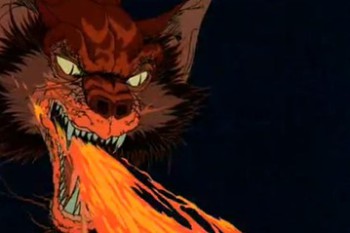 NICK: So, what did you guys think of the elephant, er, dragon in the room? What did you think of the realization of Smaug on the big screen? Personally, I think one of the most well done dragons ever (the voice acting is spot on, but frankly no better than in the animated Hobbit, which was also perfect).
NICK: So, what did you guys think of the elephant, er, dragon in the room? What did you think of the realization of Smaug on the big screen? Personally, I think one of the most well done dragons ever (the voice acting is spot on, but frankly no better than in the animated Hobbit, which was also perfect).
GABE: Smaug is quite impressive. I like how the movie makers kept the audience bated by filming Smaug in “invisible vision” for so long. But I think a short battle, between Smaug and the Dwarves, outside of the mountain, more in accordance with the book, one that results in the Dwarves being trapped in the mountain, would have been more satisfying.
FRED: I was quite happy with Smaug — properly awed and delighted. And I LOVED that treasure-pile! Frankly, Dwarf-stronghold and cavern-lover that I am, I’ve been thrilled with everything we’ve seen so far of Erebor, both inside and outside. I wish we’d seen that much of Moria in the FOTR movie! Anyway, that treasure-pile is everything it should be — three cheers to Jackson & crew for that! (And kudos to them for pronouncing the dragon’s name with the “ou” in “loud,” when the modern American tendency is to pronounce it “smog,” as it was in the animated version.)
But back to Smaug himself: I’m not a huge fan of the “perpetual grin” they gave him, but it’s growing on me. I liked it better the second time around (as I did the rest of the film, too). But yes, overwhelmingly, the voice acting was right on, the staging and movements were perfect, I loved how he was really saying the words with his mouth, not just emitting a disembodied voice . . . yes — the best on-screen dragon I’ve seen. Vermithrax Pejorative of Dragonslayer, who has held that honor for over three decades, has finally handed over the crown.
Hot Elves and Rock-hard Dwarves
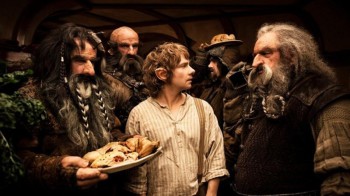 FRED: I also want to make a point about the representation of the Dwarves. A friend of mine, ardent Tolkien fan for 35 years or so, was appalled at the way the Dwarves magically throw Bilbo’s dishes around when they’re cleaning up after the Unexpected Party. Personally, I LOVED that scene, and I think Jackson’s people nailed it. When I re-read The Hobbit not long ago — the first time I’d read it as an adult — I was surprised by how much and how often Tolkien plays the Dwarves for comedy. Again and again, he gives us comic scenes. Jackson captures some of that, but he definitely affords Durin’s folk their rightful dignity and mystery. He knows where to draw the lines in a film. Frankly, the scenes Tolkien wrote twice, where the Dwarves show up little by little by little, work wonderfully in the book, but they wouldn’t work nearly so well on the visual screen. The dish-throwing is comic, but it achieves something more: it shows us that these are magical folk. They’re not Men. They’re strange fellows from far away who are involved with treasures and kingdoms under mountains — the kind of people that self-respecting Hobbits shouldn’t be involved with. I applaud Mr. Jackson fervently for getting that just right!
FRED: I also want to make a point about the representation of the Dwarves. A friend of mine, ardent Tolkien fan for 35 years or so, was appalled at the way the Dwarves magically throw Bilbo’s dishes around when they’re cleaning up after the Unexpected Party. Personally, I LOVED that scene, and I think Jackson’s people nailed it. When I re-read The Hobbit not long ago — the first time I’d read it as an adult — I was surprised by how much and how often Tolkien plays the Dwarves for comedy. Again and again, he gives us comic scenes. Jackson captures some of that, but he definitely affords Durin’s folk their rightful dignity and mystery. He knows where to draw the lines in a film. Frankly, the scenes Tolkien wrote twice, where the Dwarves show up little by little by little, work wonderfully in the book, but they wouldn’t work nearly so well on the visual screen. The dish-throwing is comic, but it achieves something more: it shows us that these are magical folk. They’re not Men. They’re strange fellows from far away who are involved with treasures and kingdoms under mountains — the kind of people that self-respecting Hobbits shouldn’t be involved with. I applaud Mr. Jackson fervently for getting that just right!
GABE: I, also, enjoyed this movie much more during my second viewing. There simply was too much detail for me to process through the first viewing. With the second viewing, I had a better time receiving it all. Many “non-readers,” knowing I am a Tolkien fan, expect me to be righteously indignant about the intrusion of a new, “non-Tolkienian” character, and, a surprise to them, I always say, “Actually, I am TOTALLY okay with Tauriel.”
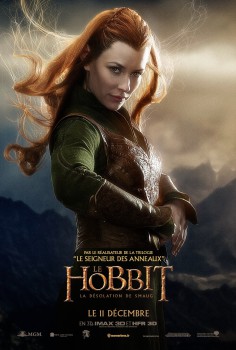 The obvious reason is that Evangeline Lilly is very hot. (And a friend, incidentally, would accept Richard Armitage as her “king,” any day.) And she looks really good as a “Jedi warrior,” even though the CGI action routinely strains the bounds of credulity. And I also fully support the Elf/Dwarf romance. I find it curious, in hindsight, that Tolkien was able to imagine the mingling of Elf and Man (in the face of extreme social prejudice, within the context of the world of Middle-earth, of course) but didn’t entertain the same considerations for the possible mingling of other “races” in Middle-earth. An obvious reason would be that Tolkien’s dwarves are very private, very secretive, very insular, so OF COURSE they wouldn’t mingle with other races. Tolkien’s notes on “Durin’s Folk” state that they even marry EACH OTHER with extreme difficulty, being, even as individuals, very jealous, self-absorbed people, and that this (as well as a low birth-rate and a naturally small population of female Dwarves) accounts for their “dying out” or “fading away.”
The obvious reason is that Evangeline Lilly is very hot. (And a friend, incidentally, would accept Richard Armitage as her “king,” any day.) And she looks really good as a “Jedi warrior,” even though the CGI action routinely strains the bounds of credulity. And I also fully support the Elf/Dwarf romance. I find it curious, in hindsight, that Tolkien was able to imagine the mingling of Elf and Man (in the face of extreme social prejudice, within the context of the world of Middle-earth, of course) but didn’t entertain the same considerations for the possible mingling of other “races” in Middle-earth. An obvious reason would be that Tolkien’s dwarves are very private, very secretive, very insular, so OF COURSE they wouldn’t mingle with other races. Tolkien’s notes on “Durin’s Folk” state that they even marry EACH OTHER with extreme difficulty, being, even as individuals, very jealous, self-absorbed people, and that this (as well as a low birth-rate and a naturally small population of female Dwarves) accounts for their “dying out” or “fading away.”
But Jackson’s Dwarves are a far cry from Tolkien’s Dwarves. Perhaps I am presuming too much here, but I imagine that Tolkien would be puzzled by the Elfin acrobatics and fighting styles that Jackson’s Dwarves exhibit. Tolkien’s Dwarves are formed out of rock. A Dwarf wouldn’t expertly dodge a blow. One would take it, right in the face, and if the blow broke his stony skin at all, perhaps a scar like a crack in a flagstone would be a reminder of this unfelt wound. In battle, Dwarves wouldn’t dodge and weave and flip. They would stand, side by side, a shield wall as unbreakable as stone ramparts.
Jackson’s Dwarves are just more “people,” and it is natural and inevitable, in this 21st century, that sexual interest will awaken between at least one Dwarf/Elf couple. The homosocial relationship between Legolas and Gimli may provide a foundation for it. If it didn’t smack quite so much of “Marian adoration,” perhaps Gimli’s love for Galadriel would be an even stronger one.
…and Back Again: Final Thoughts
GABE: I guess I would point back to my screed, above, in which I obviously have accepted Tolkien’s extra-textual work as authority. It has seemed quite obvious that these three movies are not just The Hobbit (which Jim Armstrong — an English professor whom both Nick and I admire — considers a pleasant “folk tale”) but are more Lord of the Rings “epic” because of the inclusion of outside material. But, again, I am often puzzled by the manner in which Jackson and company have chosen to include that material.
FRED: Just a clarification: I also have no problem at all accepting material from the Appendices, LOTR, and other notes of Tolkien’s as authoritative. In fact, I like it a lot that the moviemakers made use of that material — that is the surest and best way to begin expanding The Hobbit into three films.
I think the point about the altered tone is not the dramatization of the gathering Shadow and the fact that the White Council is trying to deal with it. It’s more about how something fairly small and childlike (the book The Hobbit) is caught between that tone and one of something huge and dark (the book LOTR).
Tolkien was perfectly content to let LOTR be strikingly different in tone and depth from The Hobbit. His publisher wanted another children’s book, and he gave them a giant work very much for adults. The filmmakers have striven for much greater unity of tone between the two works, and that was bound to create some awkwardness and a great challenge. All in all, I applaud their efforts!
For me, even though there’s creative extrapolation and divergence from Tolkien’s books, the movies are quite enjoyable. One thing we three have in common is a love of story, and great old stories — myths and fairy tales — have often come down to us through the centuries in multiple versions. In his work, Tolkien set out to create a prehistoric mythology of England. I believe he succeeded in that the reader of his books is left with the clear sense that the tales represent something much bigger than the work of one 20th-century author. Middle-earth has a life of its own, just as Odysseus, Heracles, Snow White, and all the rest have an existence that is no longer dependent on any one chronicler of their exploits. As such, it feels perfectly natural that reasonable variations on the story of Bilbo can occur. Yes, the Tolkien properties are much newer, and no, I’m not advocating any violation of copyright; I’m only saying that the principle holds. Great stories can endure variations in their telling. In fact, they both invite and thrive on variation as different tellings explore different aspects of the truths these tales bring us.
GABE: Hear hear!
NICK: I concur. This council is concluded. Now let’s go drink some mead – unless either of you has some miruvor or Ent-draught?
 Frederic S. Durbin is the author of Dragonfly (Arkham House hc; Ace Fantasy pb) and The Star Shard (Houghton Mifflin). His short stories for The Magazine of Fantasy and Science Fiction and Black Gate are highly regarded, and he is also a regular contributor to the children’s magazine Cricket. [Nick Note: When it comes to Tolkien and Lovecraft, Fred seems to have an eidetic memory, recalling — to our astonishment — whole passages in detail even when, in some cases, he has not read the passage in many years. If I cannot recall a name or a people or a place in Middle-Earth, I can usually count on Fred to refresh my memory.]
Frederic S. Durbin is the author of Dragonfly (Arkham House hc; Ace Fantasy pb) and The Star Shard (Houghton Mifflin). His short stories for The Magazine of Fantasy and Science Fiction and Black Gate are highly regarded, and he is also a regular contributor to the children’s magazine Cricket. [Nick Note: When it comes to Tolkien and Lovecraft, Fred seems to have an eidetic memory, recalling — to our astonishment — whole passages in detail even when, in some cases, he has not read the passage in many years. If I cannot recall a name or a people or a place in Middle-Earth, I can usually count on Fred to refresh my memory.]
 Gabe Dybing is an English instructor at Winona State University. A popular panelist at conferences and conventions, he published and co-edited with Ozment the literary journal MOOREEFFOC: Fiction in the Mythic Tradition. [Nick Note: Gabe has forgotten more about Tolkien than you’ll ever know. Or at least than I’ll ever know — and I wrote a Master’s Thesis on the Oxford prof! He’s also read LOTR more times than I’ve read any single work except perhaps Green Eggs and Ham.]
Gabe Dybing is an English instructor at Winona State University. A popular panelist at conferences and conventions, he published and co-edited with Ozment the literary journal MOOREEFFOC: Fiction in the Mythic Tradition. [Nick Note: Gabe has forgotten more about Tolkien than you’ll ever know. Or at least than I’ll ever know — and I wrote a Master’s Thesis on the Oxford prof! He’s also read LOTR more times than I’ve read any single work except perhaps Green Eggs and Ham.]
 Nicholas Ozment wrote his Master’s Thesis on the Inklings, an informal Oxford writers’ group that included Tolkien, C.S. Lewis, and Charles Williams. He writes lots of stuff. Some of it can be read here at Black Gate. [Nick Note: He am I and I am you and you are we and we are all together.]
Nicholas Ozment wrote his Master’s Thesis on the Inklings, an informal Oxford writers’ group that included Tolkien, C.S. Lewis, and Charles Williams. He writes lots of stuff. Some of it can be read here at Black Gate. [Nick Note: He am I and I am you and you are we and we are all together.]
The Inkjetlings: While the Inklings met in a local pub and in Lewis’s college rooms, members of the Inkjetlings live in different cities and states. Except for the occasional fantasy convention or cross-country visit to attend a wedding or other special occasion, we only meet virtually. Our friendship (going on fourteen years now) has grown and flourished largely over the Internet, hence the name’s play on computer printers as well as — isolating “jet” — the idea of distance and the usual means of travel when we actually see each other in person. [Nick Note: A triple wordplay! And since the original Inklings already had a dual wordplay, does that make it quadruple?] During that decade plus, we have also written a shared-world novel, Tales of the Unsung Heroes, which we hope will someday see print.
I was able to forgive a lot of parts in those movie. But why does every single event have to be life or death. Most modern movies are guilty of this.
They don’t just meet Beorn, no, he has to chase them and they just barely make it into the house. They can’t just go to Dale and have everyone be decent, they have to almost be killed. Bilbo can’t just find the secret door, he has to find it, and almost drop the key off the mountainside.
All I can say is Beorn better get a lot of kick ass time in the next movie.
It takes all kinds to make a ball game, of course, but I thought The Hobbit: The Desolation of Smaug was truly dreadful. I always thought it was a mistake to expand Bilbo’s relatively modest story into a trilogy in an attempt to upgrade it into an epic and strengthen its links with The Lord of the Rings…and of course shake three times the money out of the public’s wallets. Even so, I enjoyed last year’s first installment quite a bit more than I thought I would, but this time the downside of the strategy manifested itself with a vengance. This Hobbit is an overly noisy, overly busy movie with no pace, rhythym, or grace to it, and I couldn’t wait for it to end. For such a big project, some of the CGI seemed almsot perfunctory and having almost every scene done in dim light with a silver/grey color scheme made the movie visually monotonous. The “expansion” takes the story away from its title character – Tolkien’s book is almost exclusively Bilbo’s story, but he is almost incidental to the movie, so much else has been shoehorned in. Some of the best (often humorous) moments from the book are dropped or rushed over to make room for the ultimately uninteresting, uninvolving stuff that only served to bloat a modest tale and pad filmmakers’ bank accounts. That’s what upsets me most, I think – in the Lord of the Rings films, the regard that Peter Jackson and his collaborators had for the source material was palpable, but here, a willful disservice has been done to a beloved book just to make wheelbarrows full of money…for people who already have a lot of money-filled wheelbarrows. (For me, the only high points were Stephen Fry as the Master of Lake-Town and Benedict Cumberbatch as Smaug, but it was too little too late. And by the way, if Smaug can’t even scratch one dwarf after thirty minutes of engaging them in hand-to-claw combat, he’s a singularly inept dragon!) I can forgive a lot of omission and addition to an established story if the end result still feels like the original. (The 1956 John Huston/Ray Bradbury Moby Dick is a perfect example of how this can work). But every change here made the movie feel completely different from Tolkien’s lovely, humorous, unhurried tale. If you want the Hobbit, you would do better watching the 1977 Rankin-Bass television version. It’s certainly far from perfect, but at least it doesn’t try to be something it’s not – it feels like Tolkien’s Hobbit much more than the Jackson version does. I’m glad that those who enjoyed it got their money’s worth, but for me, The Hobbit: The Desolation of Smaug felt like a cross between a poorly refereed D&D game and a season 5 episode of The A Team. Desolation is right.
To clarify my screed a bit – I don’t object to the inclusion of material that Tolkien wrote but excluded from the main body of the book. I would just like to see it competently used (as it was in the original LOTR films). But judging by The Hobbit, that’s a forlorn hope; I guess King Kong stomped whatever filmmaking discipline that Jackson had left clean out of him.
I just got home from seeing the film about twenty minutes ago, so this is a serendipitous post to find. The video game influence was pretty pronounced, but here’s the reason I can forgive it.
Jackson is stuck with an overlarge crew of heroes, all of whom survive until very nearly the end of the story despite going through overwhelming peril after overwhelming peril. What can you do with that?
In LOTR, Tolkien provided significant characters who died, some of them early on, so there was a sense that the dangers could be gritty and, on the fictional world’s own terms, real. Nobody was safe. However, Jackson can’t kill any of The Hobbit‘s named characters early to make the danger feel more realistic. Nor can he make the dangers wimpy, because that would be both boring and unfaithful to the text. He can make the heroes complete badasses so that it’s plausible, sort of, that they’d survive, but that leads directly into cartoon-style violence. Jackson has chosen to embrace that problem and force it to become its own weird virtue. Forgive the echo of my old Black Gate post on this aspect of An Unexpected Journey, but I found the cartoon violence even more pronounced in The Desolation of Smaug.
I really like Gabe Dybing’s point about how weird it is that Tolkien could imagine, and repeatedly did, romantic relationships between Elves and Men, but rarely other interracial combinations. For that matter, I don’t recall Tolkien ever showing a romantic pairing of an Elven man and a human woman. If an Elven woman can be genuinely attached to a human who has 40 years of life experience to her three thousand years, why would a Dwarf be that much less beneath her dignity? Overall, I liked Tauriel far more than I expected to, more than I liked many of the other big divergences from the source material.
The Free Peoples of Middle Earth are generally not big on exogamy, and their defniitions of Us versus Them can be quite fine-grained. Elves whose forebears saw Valinor lord it over Elves whose forebears never crossed the sea. Eowyn expects Faramir’s family to reject her because she’s not Numenorean. Weirdly, the Maiar didn’t seem to mind when Melian, who participated in singing the cosmos into existence, settled down with Thingol, a mere Elf. Perhaps that’s Tolkien’s subtle comment on how exogamy ought to have been viewed: the angels don’t mind, and the heroic descendants of of Melian were more given to exogamy than anybody else in Middle Earth.
@Glenn: I’ve wondered the same thing. The example of Bilbo dropping the key is a good one — Got to pump up a little artificial suspense for those attention-deficit audience members zoning out in a sugar coma! Or how about in the first film, when Bilbo, Gandalf, and the dwarves are chased up into the trees? Now, in the book, being up in a tree surrounded by orcs who are going to set fire to said tree was really suspense enough. And we know they escape, even if we haven’t read the book, because there are still two films to go. Yet we must add the wargs climbing the trees, the tree collapsing, the party dangling by their fingers over a gaping chasm, and the orcs actually getting to them and engaging in combat. Hey, it’s more visual and video-gamey, as Gabe says! But what it actually does for this viewer is just strain credulity past the breaking point.
Another quibble about blockbuster films in general: Making the stakes being fought for always be “the fate of the whole universe” actually has the effect of diminishing suspense. I mean, do we really think that Thor 2: The Dark World could potentially end with the whole universe being wiped out?
Speaking of Thor…While many of your criticisms are echoed in our discussion, Fred, Gabe, and I (huge Tolkien fans all!) were ultimately more forgiving and appreciative in our assessment, based, I think, on the view extolled by Fred in his final paragraph. If you approach these films considering that they are removed from the source insofar as they use the story to serve purposes different from Tolkien’s, you can better gauge how well Jackson & company achieved those purposes on their own merits.
The films may not be as far removed as, say, Marvel’s Thor is from Norse myth, but they are a new iteration of the story — a new version, a new incarnation. A different one — by no means a superior or even an equal one. Not the one we would have gotten from Guillermo del Toro or some other director, or the one that we would have ideally envisioned had we held the reins. It (the Hobbit trilogy) serves up its share of major disappointments and causes for criticism, but so far it’s a better prequel in relation to LOTR than the Star Wars prequels were to that franchise, in my opinion! (Is that too low a bar to set, though?)
emcgargle: I agree with you about the Rankin-Bass version. For all its flaws and shortcomings, it really is a little gem full of fondly-recalled pleasures.
Sarah, I think you’re spot-on about Jackson’s pushing of the cartoon-violence aspect. Adherence to credibility, plausibility, and the laws of physics is much less in play here than in LOTR.
Interesting expansion on Gabe’s observation about relationships among the races, too!
The book is pretty focussed thematically. Del Toro said it was about greed. I’d be more specific – I think the book is about the dangers of covetousness. You have Smaug with his booty, the dwarves who want it back, the lakemen, who are hoping to benefit from the trickle-down effect if the dwarves accomplish their goal.* Even the trolls have some treasure stashed away in a cave. Ultimately Bilbo succumbs to the same disease, when he becomes obsessed with the Arkenstone.
But what is the film about – thematically? Jackson reminds me a lot of Spielberg in this respect. He’s capable of the odd, genuinely inspired touch but he tackles a story scene by scene – is this an action scene? A transition? What is this particular character’s central conflict? – without having any unifying agenda or much taste. There were good bits in this film but a giant gold dwarf? Talk about jumping the shark.
* or maybe not. Somebody has already pointed out that killing Smaug and releasing so much gold onto the market would destroy middle-earth’s economy.
I did enjoy Desolation of Smaug, but I mostly had to treat it as a movie adaptation of Lego Hobbit Adventures or something.
“* or maybe not. Somebody has already pointed out that killing Smaug and releasing so much gold onto the market would destroy middle-earth’s economy”
Funny you should mention that. I wrote the same thing in my scathing review of the Hobbit back in mid December. Here’s the last part for anyone with a sense of humour…
Thus we reach the end of the movie, with Bilbo feeling remorse for what they have started. So what is left for part three of The Hobbit: The Book What Book? Well we have a battle between Smaug and Laketown, a battle between the White Council and the Necromancer, and a battle between the Five Armies. Looks like we’re in for a real treat there then. 3+ hours of constant combat action… and to ensure he continues to outdo himself on the grandeur scale; Jackson will hire Roland Emmerich to consult. Yippee!
The end of the movie will undoubtedly involve Bilbo returning home to find his burrow redeveloped to hollow out the inside of the hill, with plenty of pretty waterfalls and arching walkways with no banisters. Oh, and bigger on the inside than out! Then a final wuxia fight scene between him and the Sackville-Baggins’ to seize control, because, well, it’s just not epic enough as written by Tolkien.
Of course Bilbo’s life won’t be all relaxing ideal. Soon after his return the coinage standard will collapse, due to the international finance market being flooded with an almost infinite supply of precious metals; making Bilbo’s modest chests of gold and silver worthless. Reduced to a life of penury he’ll labour in the carrot fields, ultimately having to sell his nephew into slavery. I suspect this has been Sauron’s plan all along, since Middle Earth never recovers from the following Great Depression, most of the towns and cities falling into ruin. Just take a look at the suburbs of Gondor for instance…
To conclude this epic diatribe I am faced with two observations. To the illiterate, unwashed mob who have been brought up sucking at the nipple of CGI and Lucasian exaggeration, this will be a perfectly serviceable fantasy movie. Full of mindless action and spectacle, suited to the coliseum tastes of the modern generation.
To those of us who remember fondly the children’s tale of a nervous hobbit who found his courage, used his wits to succeed where swords failed, and grew to lead the dwarfs, we must sadly face the fact that Jackson has no real inclination to make his trilogy true to that wonderful book. His interpretation has now travelled very far from the original story; at the expense of its morality, hope and delightful songs.
Yes, I am a prematurely grumpy old man! 😉
You and my brother are clearly singing from the same hymnsheet, Pete! He not only made the same comments to me (re how the middle-earth economy would collapse) but also about the lack of bannisters in both the dwarfish halls and elvin stairways. I mean, from a health-and-safety perspective alone…
When I first saw Jackson’s Bad Taste I figured it was a self-aware celebration of schlock. I didn’t realize it was a frank admission of his biggest weakness as a creator.
Do people really like endless scenes of CGI silliness? I’ve never met anyone that did, most people admit to getting bored by them. King Kong even claimed a few lives I hear, when audiences’ indifference became so overwhelming that their bodies died on a cellular level. The dinosaur chase scene alone has killed upwards of a dozen people, some of whom crumbled into dust upon expiration.
I like this roundtable discussion (and hey Gabe, long time no see!), though I’d have probably gotten more out of it if I’d seen the movies. Something seemed off to me too, from the previews, and I’ve kept away. All the stuff that niggled me in LoTR looks like it’s turned up to ten in this one, and I wish it had gone to a different director determined to treat with it on it’s own merits, rather than someone determined to repaint his hobby horse in the most garish colors imaginable. Bad Taste indeed, PJ.
This roundtable is beginning to resemble the Council of Elrond. But who will step up and throw this filmic blight back into the chasm from which it came?
[…] http://www.blackgate.com/2014/01/06/inkjetlings-round-etable-jacksons-desolation-of-the-hobbit/ […]
I will take the film to Mount Doom. Although I do not know the way.
You get off the 110 Freeway and make a left on Hollywood Boulevard. It’s about six blocks down on the right hand side.
There appears to be a, well, perhaps not a consensus but a general trend of opinion that Peter Jackson really lost the plot with this film. Here’s my take, for those wanting just a bit more piling on.
http://www.kenlizzi.net/blog/
Okay, the film is troubled, but about all that gold crashing Middle Earth’s economy, bear in mind that most of it ends up back in the hands of the Dwarves, who are not in any hurry to part with it. The portion of the treasure that ends up with the Elves isn’t likely to cause much trouble, since Thranduil has had several thousand years to accumulate economic observations.
Actually, that brings me to the reason I didn’t mind Elves as Jedi. Tauriel has held her job for 600 years. Six centuries of daily practice at anything would produce results that would be unachievable in a human lifespan. Jackson’s taste is dubious, yes, but if he began with the question, “What does a warrior look like whose biological age is equivalent to being in her 20s, but who has had 600 years to perfect her skill,” his results look to me like a reasonable answer to a question that nutty.